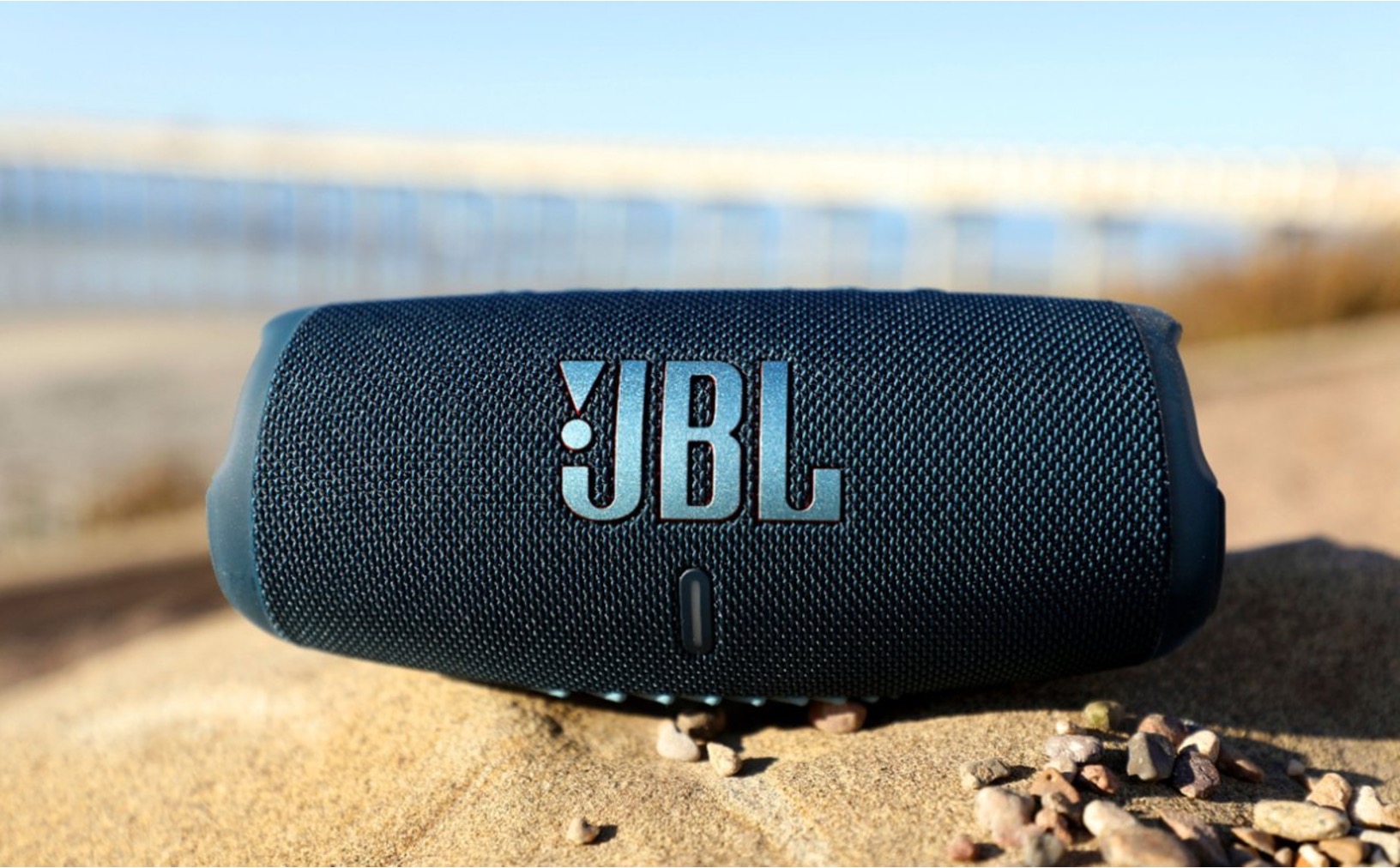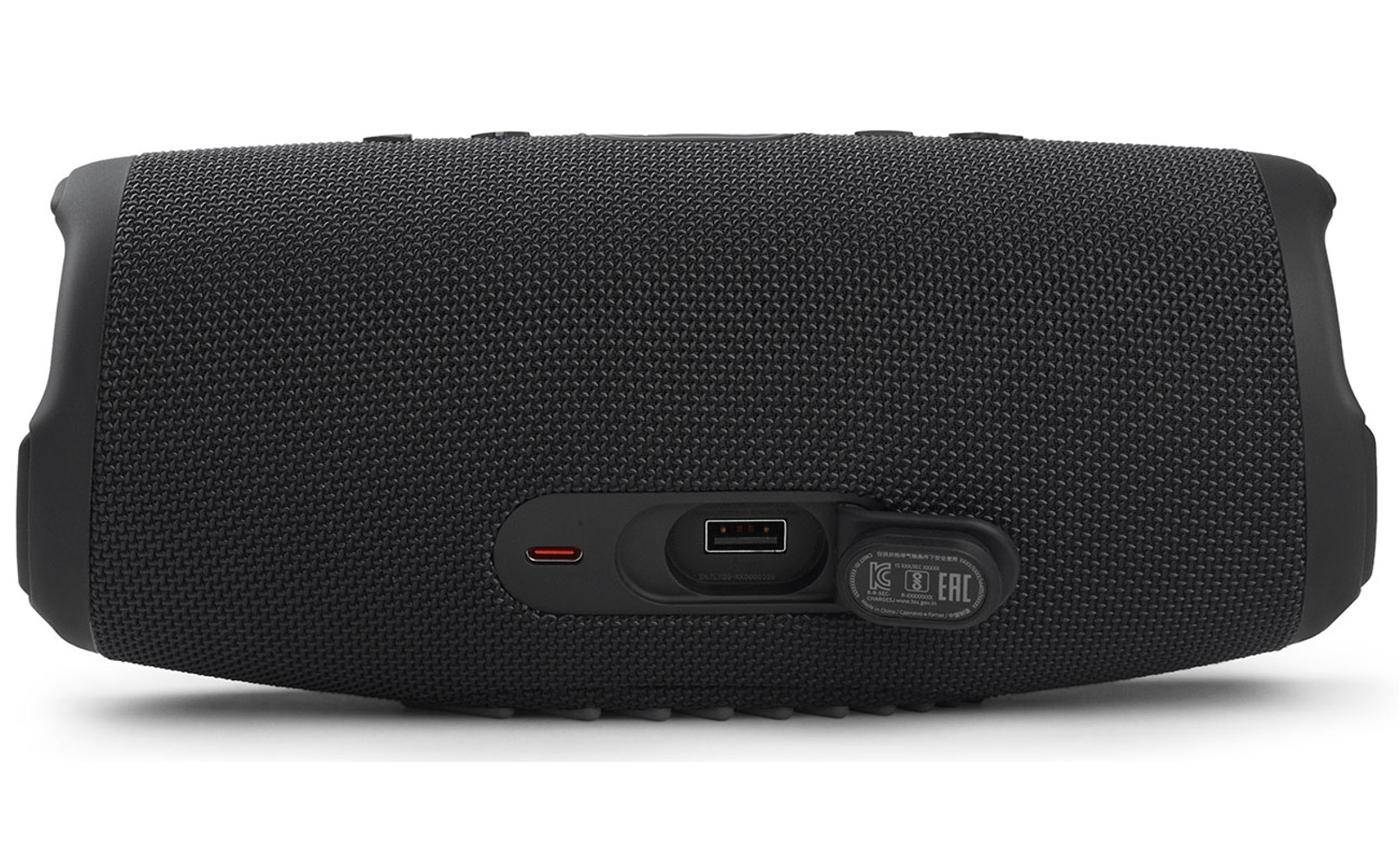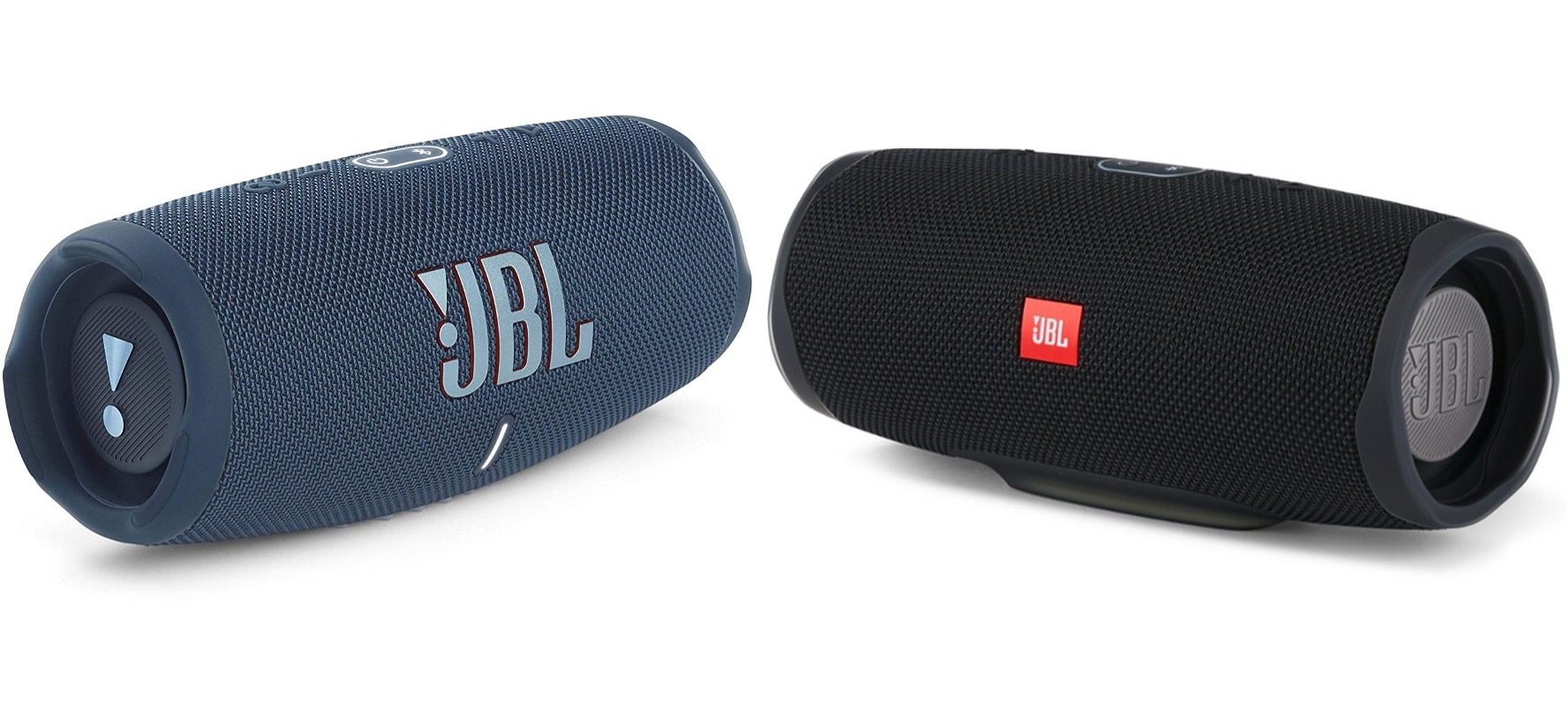The JBL Charge 5 is the latest Bluetooth JBL Charge speaker released on April 2021 and is an improvement over its predecessor, the JBL Charge 4. Compared with the Charge 4, we felt that the JBL Charge 5 speaker sounds slightly better with more bass and power output for louder volume levels. There are a few key differences between the two – the Charge 5 now comes with an improved 40W power output compared to the Charge 4’s 30W, and it also features a 52 x 90mm woofer and a newly upgraded 20mm tweeter for crystal clear highs. Both speakers come with dual passive bass radiators at the side of the speaker to improve the bass performance, and both have a frequency range of 60 Hz to 20 kHz (the Charge 5 range is actually 65 Hz to 20 kHz, but the difference is not noticeable). One notable improvement with the Charge 5 is that it comes equipped with Bluetooth 5.1 and supports both A2DP 1.3 and AVRCP 1.6, compared to the Charge 4’s Bluetooth 4.2.
The Charge 5 and Charge 4 both come with USB-C power outputs which can be used to charge your smartphone devices (it doubles as a power bank). Both speakers come with a built-in battery of 7500mAh with an estimated battery life of 20 hours. In terms of weight and dimensions, the JBL Charge 5 is practically the same size and weight – both weigh 2.1 lbs and can be easily carried around.
Sound Performance
The JBL Charge 5 delivers much better sound performance than the Charge 4 due to its dedicated woofer and tweeter. The highs and bass frequency ranges are more clearly articulated and the bass seems tighter with much more depth. The bass is punchy and the sound quality is clear and articulate – you can hear the highs and treble ranges with pristine clarity. Vocal performances are also very clear and crisp, and while playing a couple of jazz and country folk soundtracks we noticed that the vocals also have a good amount of sparkle without sounding harsh. This speaker gets slightly louder than the Charge 4 due to the extra 10W power output, and pushing the speaker to maximum volume level, we felt that it delivers really smooth sound performance without any distortion. It’s a really good speaker for blasting music outdoors and for parties where you can hear the bass and deep punchy beats.
The Charge 4, by contrast, does not sound as loud as the Charge 5 and the bass does not sound as punchy with good depth. With that said, the Charge 4 is still a really good speaker that can deliver big sound performance and crystal clear highs. The midranges on the Charge 4 are well-articulated, and the highs and vocals also sound clear with a good level of sparkle. Apart from the bass and overall loudness, we would say that the Charge 4 has essentially the same sound performance as the Charge 5. The Charge 5 sounds marginally better and louder, but the Charge 4 is not too far off by comparison and sounds really good as well.

Specifications
The JBL Charge 5 retains quite a number of similarities with the Charge 4. The Charge 5 is IP67 waterproof and has a USB-C charge out feature to charge any compatible USB device – just like the JBL Charge 4, it doubles as a power bank. Both the JBL Charge 5 and Charge 4 are waterproof, with the Charge 5 being IP67 waterproof and dustproof which gives it added durability. Both speakers also feature the JBL PartyBoost feature which allows you to pair two JBL PartyBoost compatible speakers together in stereo mode. With that said, from our testing we found that the JBL Charge 5 can only link to another Charge 5 with the JBL PartyBoost feature (it does not work with the Charge 4).
The JBL Charge 4, by contrast, features the JBL Connect option which allows you to wirelessly link up to 100 JBL Connect plus enabled speakers together for a much wider sound performance.
The biggest difference between the Charge 5 and the Charge 4 is the addition of a dedicated 52 x 90mm woofer and 20mm tweeter, which delivers much clearer highs and more pronounced bass performance. Apart from this, the Charge 5 also has a 40W power output which is slightly more than the Charge 4’s 30W output.
Both the JBL Charge 5 and Charge 4 speakers come equipped with a 7500mAh battery that provides up to 20 hours of playtime on a single charge. They both come with a USB-C charging output which we found to be quite useful if you need to charge your iPhone device while on the go.
We also liked the fact the both speakers can sync to the JBL app where you can further customize the sound performance and EQ settings if required, which is really useful if you want to increase the emphasis on the bass or the highs.

Design
In terms of design, the Charge 5 looks similar to the Charge 4 with its durable fabric and rugged material housing. Both speakers come with dual bass radiators at the side which help to improve the bass performance, with the Charge 5 having slightly more depth in the bass response. The Charge 5 speaker is also relatively similar with the Charge 4 in terms of dimensions and weight – both weigh 2.1 lbs which makes them portable enough to carry around. We liked that you can also wirelessly connect up to 2 smartphones or tablet devices to the speaker and take turns to play music.
Both speakers also come with convenient control buttons at the top of the speaker which allow you to adjust the volume, change soundtracks and switch on Bluetooth pairing. The JBL Charge 5 does have a bigger logo design at the front of the speaker compared with the Charge 4, but practically speaking both speakers are essentially similar in size and design.

The Verdict?
The JBL Charge 5 sounds slightly better than the Charge 4 with deeper bass and louder sound performance. The Charge 5 delivers slightly more power output at 40W and comes with a dedicated woofer and tweeter that delivers crystal clear highs and very nice bass response. This speaker can handle the highs, midranges and bass really well – we played a couple of EDM and rock music soundtracks through the Charge 5 and they sounded very crisp and clean. Vocal performances were especially good with the Charge 5 – the treble ranges have a layer of sparkle that makes the highs shine.
In terms of sound performance, we have to say that the JBL Charge 4 is not too far off. The Charge 4, while not as loud as the Charge 5, also delivers really crisp highs and detailed midranges. The bass on the Charge 4 punches deep and hard, and we thoroughly enjoyed listening to pop and EDM music on this speaker. The bass is surprisingly deep and has plenty of depth, and is comparable to the bass that you get on the Charge 5. We would say that the Charge 5 is slightly or marginally better due to the louder 40W output, but they sound virtually alike when playing bass-heavy music genres through the speakers.
Both the Charge 5 and Charge 4 have the same 7500 mAh battery capacity and 20 hours of playtime – they both have USB-C outputs which you can use to charge your smartphone devices. One upgrade that the Charge 5 has is the Bluetooth 5.1 codec which provides stable wireless connectivity over longer ranges. It also supports JBL Partyboost to pair with multiple JBL Charge 5 speakers and is supported by the JBL app where you can adjust the EQ and sound settings.
With that said, we did not think that the JBL Charge 5 is worth the upgrade from the Charge 4 as they both deliver good sound performance with only marginal differences. While the Charge 5 is marginally louder than the Charge 4 with 40Ws of power output and comes with a dedicated woofer, the Charge 4 also performs remarkably well in terms of sound performance and bass. We did enjoy listening to the solid deep bass performance on both speakers and they deliver really nice highs without any distortion as well. While the Charge 5 does sound slightly better, the difference is only marginal as compared to the Charge 4 and in our view, does not justify the upgrade. If you already have the Charge 4, you would be better off keeping it for now and wait for JBL to release the Charge 6 speaker which is expected sometime in 2023.

